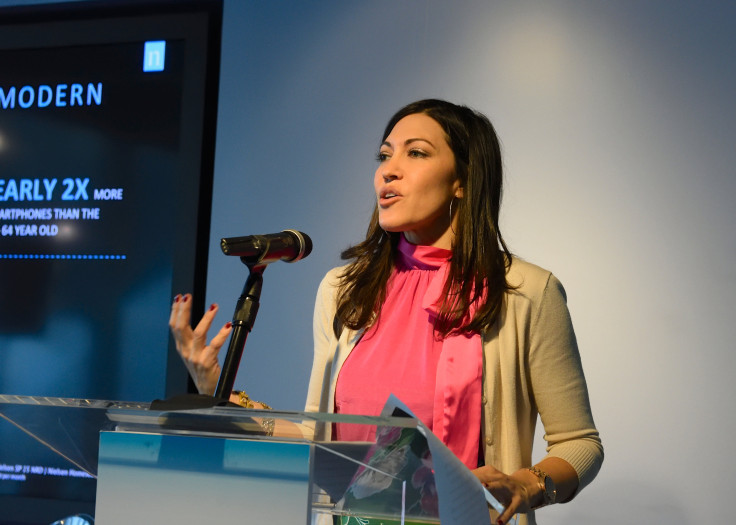
SEATTLE - After a summer full of sporting events all across the globe and a record number of viewership, Latino audiences are playing a significant role in changing the culture of sports in the United States.
According to a report released by data and analytics company Nielsen about sports and media engagement, the Latino community is now influencing what the non-Hispanic population is watching.
In an interview with The Latin Times, Stacie de Armas, a first-generation Cuban-American and Senior Vice President of Inclusive Insights and Innovation at Nielsen, supports the report's claims as to how Latinos are shaping the sports landscape in America.
De Armas has been working closely with Latinos throughout her 26-year career at Nielsen. In her current role, she focuses on collecting interesting, factual and important insights on underrepresented communities and their consumption of content.
She claims that, just like it happened in the music industry, Latinos are playing a key role in changing U.S. sports culture. "We saw that this summer with Copa América and with UEFA competitions. This year's Copa América was the most watched edition ever and it had the highest population of non-Hispanic viewers ever," de Armas said.
According to Nielsen's report, this year's Copa América final attracted over 12 million viewers across Univision and Fox. Out of the 12 million, 53% of the viewers in the U.S. were Latinos. Over the past three tournaments the percentage of Latino viewers shifted from 73% in 2016 to just 53% this year.
Despite the lower percentage, de Armas says that the decrease is a result of more non-Hispanics tunning in to watch the games that, in the past, only seemed to interest the Latino community.
She also mentioned the big strides Latinos are making in sports that would be considered as U.S. sports. "For example, things like NCAA women's tournament or Wimbledon. Sports that would have been considered niche in U.S. culture have more Latino viewers than ever. At the same time, Latinos are influencing what sports matter to Americans," she said.
The report shows that, between 2021 and 2024, Hispanic viewership of the NCAA women's basketball championship game skyrocketed by 354%. This year, over 1 million Latino viewers tunned in to watch Kamilla Cardoso's South Carolina Gamecocks beat Caitlin Clark's Iowa Hawkeyes on April 7.
When asked what that means for women's sports, de Armas said that data suggests Latinos are watching more women's sports than ever before. "This really is a once-in-a-generation time for women's sports. It is not a moment as a lot of people say."
She added that a younger audience can be one of the main contributors to the huge increase in fandom.
"The Latino community is significantly younger as the bulk of the community is between the ages 11 and 23, whereas for non-Hispanic Whites is between 56 and 66," de Armas said. "If you have a younger audience, you will have more progressive ideals. With that, there is better understanding about the value and contribution of women within the community," she added.
The Messi effect
One cannot talk about Latinos shaping U.S. sports culture without talking about Lionel Messi. According to Nielsen's report, Messi's debut with Inter Miami drew in a broader audience that included youth and non-Hispanic viewers into the mix. Messi's Inter Miami debut drove a 270% increase in linear TV viewership on Univision and TUDN, while AppleTV+ saw a spike in viewership of 300%.
"Messi's move to Inter Miami was about much more than just soccer," de Armas said. "If you think about it, the passion for one Latino athlete driving the interest that he has tells you the power of Latino athletes. That is something that we will keep an eye out for in the future, to see who else is emerging," she added.
With the World Cup coming to the United States in 2026, de Armas expects Latinos to continue making big strides in the way the U.S. population consumes sports. "We will continue to see remarkable numbers about the Hispanic community in terms of viewership, but most importantly, their influence on the games the rest of the country watches," she said.
How Latinos watch sports
Nielsen's report shows interesting patterns as to how Latinos in the U.S. like to watch sporting events.
- Streaming platforms are driving more Latino audiences than ever before, as the population makes up nearly 50% of all streaming viewership.
- Latinos spend an average of 25 hours per week watching TV, nearly 14 hours of which are using Connected TV devices.
- Latinos are also spending more time on social media compared to other communities. The U.S. Latino population spends almost one more hour each week on social media on their smartphones than the general population.
For a more in-depth analysis on how Latino sports fans are watching the games, click here.
© 2025 Latin Times. All rights reserved. Do not reproduce without permission.








